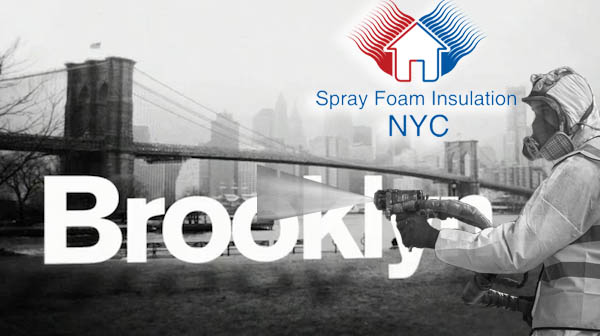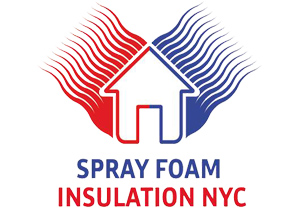Brooklyn's Leading Insulation Contractor
Insulation Contractors in Brooklyn, NY That Make Your Home More Efficient and Cozy From Attic To Basement
Request a Free Spray Foam Quote
Brooklyn NY, Leading Insulation Contractor
Spray Foam Insulation NYC offers a complete range of residential and commercial insulation services from standard spray foam insulation and sound proofing to spray applied fireproofing, steel beam insulation, foam insulation, sound proofing and even truck insulation. As a Spray Foam Insulation Contractors in Brooklyn NY, we handle new house and office construction and existing home insulation projects. We also provide consultation on how to make your building energy-efficient while meeting all New York and New Jersey building codes.
Contact Spray Foam Insulation NYC Contractor Services at:
(646) 956-4419 to learn more about our company and the insulation services we offer clients in Brooklyn, Queens, Manhattan, Staten Island, The Bronx, and Long Island, NY
- Over 20 Years Experience
- Trusted Source for Home Insulation
- Ask about our spray foam insulation services
Premier Foam Insulation Service
in Brooklyn NY
- WHY INSULATE YOU BUILDING WITH SPRAY FOAM?
Spray Foam Insulation NYC has built a reputation as a leader in Brooklyn. We make homes more comfortable and quieter by installing spray foam insulation. With the cost of heating and cooling your home skyrocketing in recent months, property owners are seeking new ways to save on their annual energy while bills while appropriating more climates control in each room.

SPRAY FOAM INSULATION IS THE MOST POWERFUL INSULATION Because of its ability to expand, spray foam tightly seals all holes, cracks, and open areas that would otherwise be exposed. Foam insulation’s R-value is at R-7 – R-7.5, the highest level in the industry.
Foam insulation’s R-value
TOP 1 BEST Spray Foam Insulation in Brooklyn NY
Spray Foam Insulation Contractor in Brooklyn NY – Residential & Commercial Insulation Contractor In Brooklyn, New York .
Spray Foam Insulation NYC offers top-notch solutions that are tailored to your needs and budget. We use only premium products like closed cell and open cell spray foam, fiberglass, and cellulose insulation for homes and commercial buildings.
Debunking Myths About Closed-Cell Spray Foam Insulation | Training | Honeywell
Benefits of Spray Foam Insulation
- Stops air and moisture infiltration
- Makes your home more comfortable
- Saves on energy costs
- Adds strength to the building structure
- It is permanent and will not sag
- Keeps dust and pollen out
- Reduces capacity requirements, maintenance and wear of HVAC equipment
Best Spray Foam Insulation Contractor in Brooklyn – Residential & Commercial – Brooklyn. Servicing the 5 boroughs, Queens, Staten Island, Brooklyn, Manhattan, Bronx, NYC
Our Brooklyn Insulation Contractors Services
A trusted provider for over 20 years
Foam Insulations
Foam insulations have greater environmental impacts than other types, due to extraction, refining and transport of raw materials such as natural gas and petroleum and the use of ozone-depleting compounds in manufacture. However, they offer some significant benefits that can offset those drawbacks, including higher R-values for a given thickness and improved air sealing of surfaces. Over the lifespan of a home, foams will save more energy per inch of insulation because of these R-values and their durability.
Mineral Wool
Mineral wool is made of strands of minerals, either from abundant rock or the recycled slag from iron-ore blast furnaces. The EPA requires that mineral wool contain at least 70 percent recycled content by weight, second only to cellulose. The proportion of recycled materials in mineral wool can surpass 90 percent; look for high recycled content and ask if you don’t see the information displayed.
Though more expensive than cellulose and fiberglass, mineral wool is more durable and moisture-resistant. It continues to insulate when wet, and it tends to maintain efficiency better under varied conditions. It also has superior flame retardant properties. Available as batts and loose fill, mineral wool can be used anywhere inside the home, though only specially made mineral wool products should be used below grade.
Like fiberglass, mineral wool is very energy-intensive to produce in furnaces, though it requires less energy per R-value than fiberglass. Mineral wool fibers pose no health threat beyond possible short-term respiratory and skin irritation during installation. However, mineral wool may contain up to 5 percent phenol-formaldehyde by weight—more than most fiberglass insulations. This is potentially harmful to indoor air quality, so check a product’s material safety data sheet (MSDS) if you are concerned.
Fiberglass
Fiberglass insulation is made of silica sand and recycled glass, both abundant resources. The U.S. Environmental Protection Agency (EPA) requires that 20 percent of materials come from recycled sources, either post-consumer or post-industrial, and some products contain up to 40 percent.
Producing fiberglass insulation requires melting the materials in a fossil fuel–burning furnace, which consumes substantial amounts of energy and generates greater amounts of air pollution than the manufacture of other insulation types.
If installed properly, there is little danger of inhaling fibers, which are throat, eye and skin irritants. Although the Occupational Safety and Health Administration still requires cancer warning labels on fiberglass insulation products, the American Lung Association states that glass fibers are not linked to increased cancer risk, even among glass fiber manufacturing workers.
Fibers can escape into the air during installation—or if ductwork is not sealed properly—becoming a problem for residents. Because of the concern that fiberglass emits phenol-formaldehyde, some manufacturers have switched to nontoxic acrylic binders or have had their products certified by Greenguard as low-emitting products. (A low-emitting product has half of what the EPA considers elevated formaldehyde levels.)
Loose-fill fiberglass seals air spaces best because it is blown in, preventing air movement and heat loss. Low-density batts are most commonly used, but can lose up to 50 percent of their R-value in cold climates due to moisture infiltration. High-density batts cost more, but have a higher R-value; they will pay back the difference in lower energy bills, especially in cold climates.
- What is Spray Foam
- Benefits of Spray Foam Insulation
- Open Cell Spray Foam Insulation
- Closed Cell Spray Foam Insulation
Cellulose
Cellulose insulation is made primarily from recycled paper. About 75 percent of the material used to make cellulose insulation is post-consumer waste paper, giving it the highest average recycled content of all insulation types. The manufacture of cellulose insulation involves a fraction of the energy use and pollution required to make mineral wool and fiberglass insulation. Additionally, scrap cellulose generated during installation can be reused, cutting down on waste.
Cellulose insulation has no significant effect on indoor air quality. Offgassing of volatile organic compounds (VOCs) contained in ink on newspaper waste in cellulose insulation is not a health concern, since some ink is removed while recycling paper into pulp, and much of the ink used is vegetable-based. The amount of boron used as a flame retardant in cellulose is harmful only if ingested.
Cellulose insulation is blown into wall and ceiling cavities, as well as onto attic surfaces, though to stick to attic ceilings, it must be held in by netting or sprayed on wet with an acrylic binder to prevent settling. Like all sprayed or blown insulations, it can be installed into wall cavities through a series of small holes drilled in the wall, causing minimal disturbance during remodeling. It is not suitable for application below grade (below or at the perimeter of the foundation) or in other locations where it would be exposed to moisture.
Cellulose can absorb moisture, decreasing its R-value over time, and if it is exposed to moisture for long periods, it will rot and grow mold. In some instances, a vapor barrier should be installed once the insulation has fully dried (typically in two weeks) to prevent moisture from reaching the insulation. Good sources of information on construction practices that minimize moisture problems are the climate-specific Builder’s Guides available from the Energy and Environmental Building Association.
Loose-fill cellulose typically costs 25 percent less than fiberglass, though installation may be more expensive. Proper installation is important to prevent undue settling. Wet-spray or dense-pack installations are typically more expensive than fiberglass installation. However, installing cellulose installation with these methods is extremely airtight, so the nominal (rated) R-values are more commonly achieved than with fiberglass batts.
Spray Foam Insulation Contractors Residential & Commercial in Brooklyn, New York, NY.
Save money and live more comfortably by increasing the energy efficiency of your home. We make improvements to your entire home so you can: Reduce your energy bills Increase the comfort of your home Breathe healthier air indoors Help the environment!
Residential & Commercial.
SPRAY FOAM INSULATION CONTRACTOR SERVING:
New York City | Queens | Brooklyn | Staten Island | Manhattan | NJ




